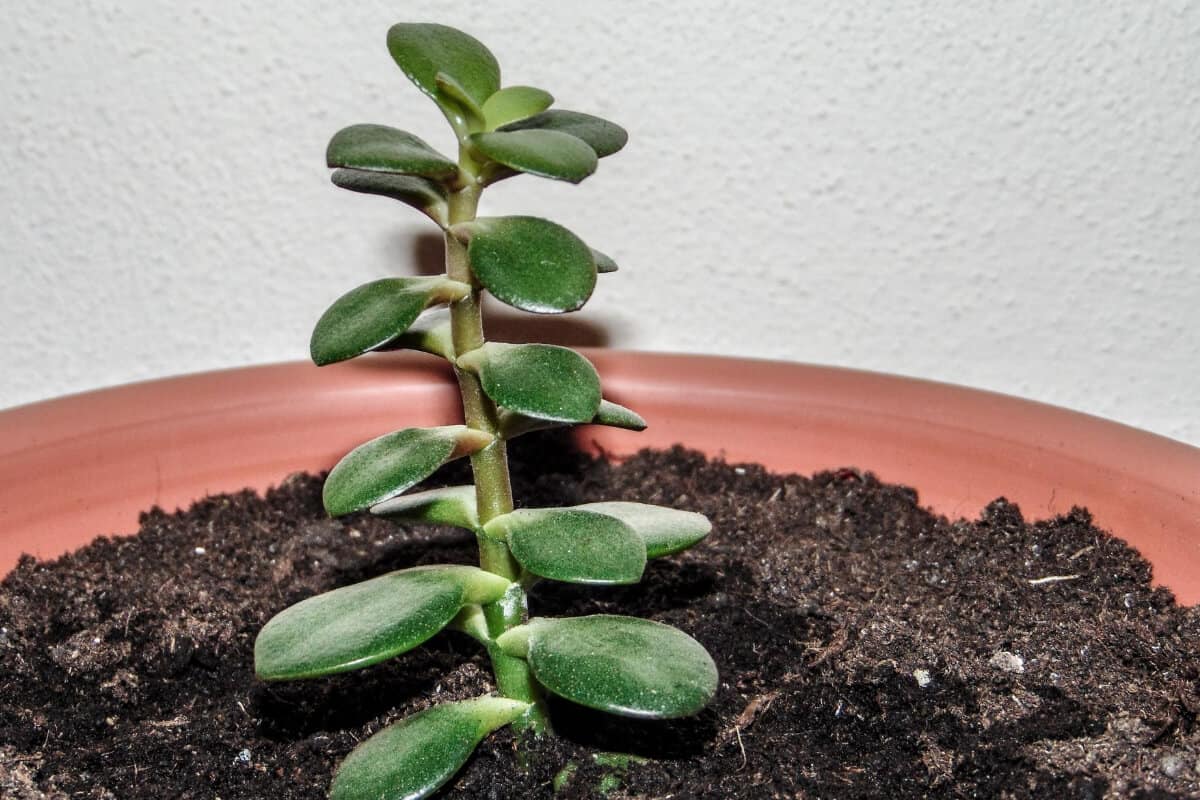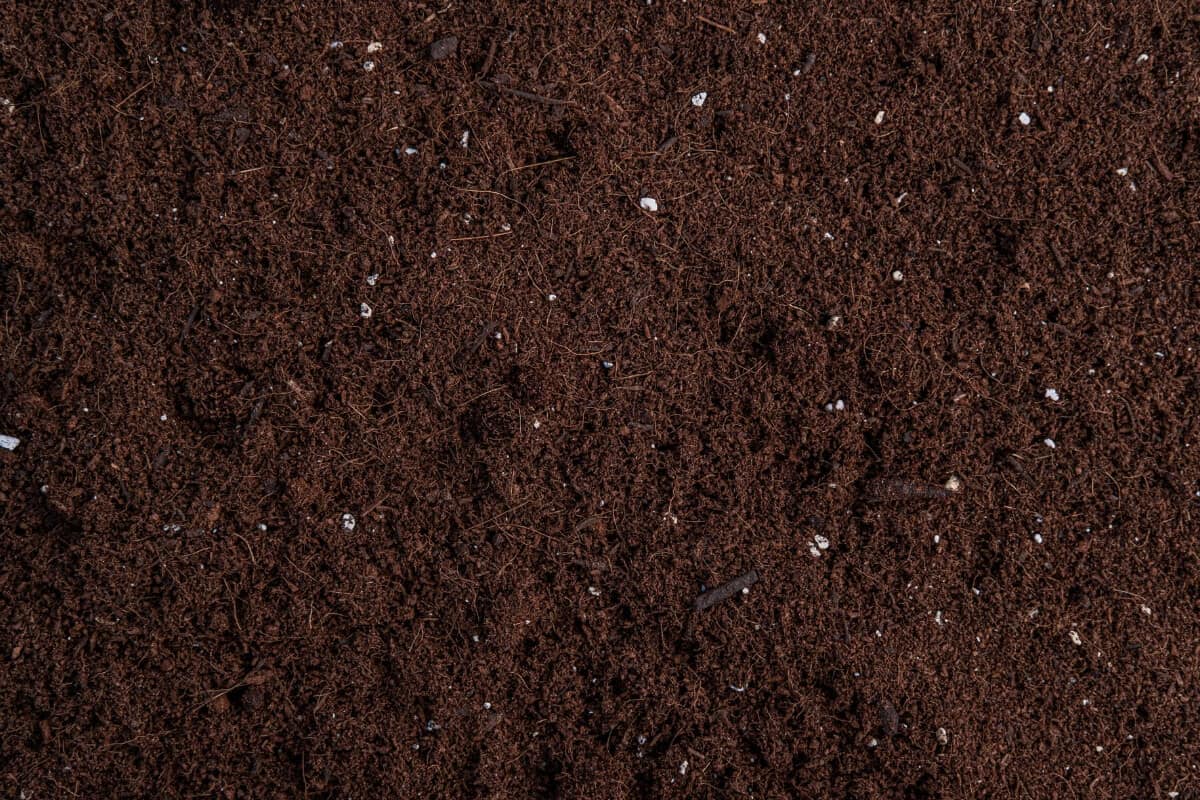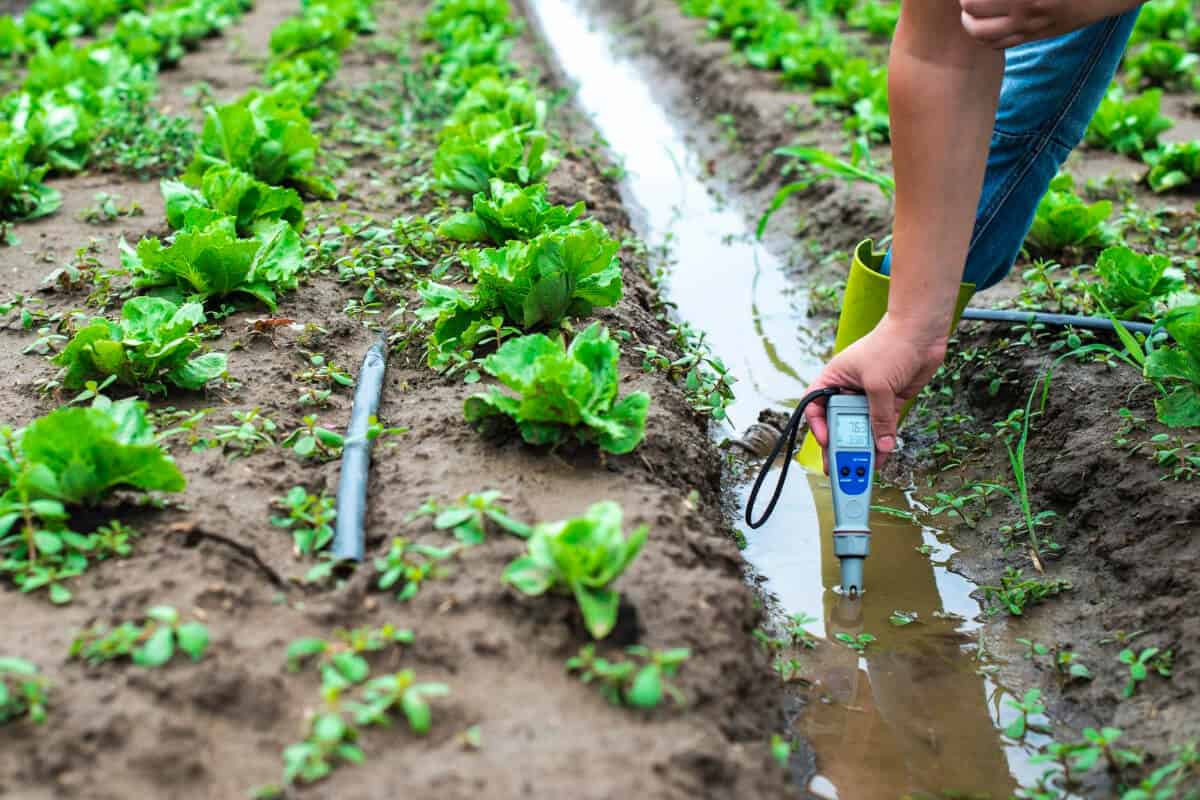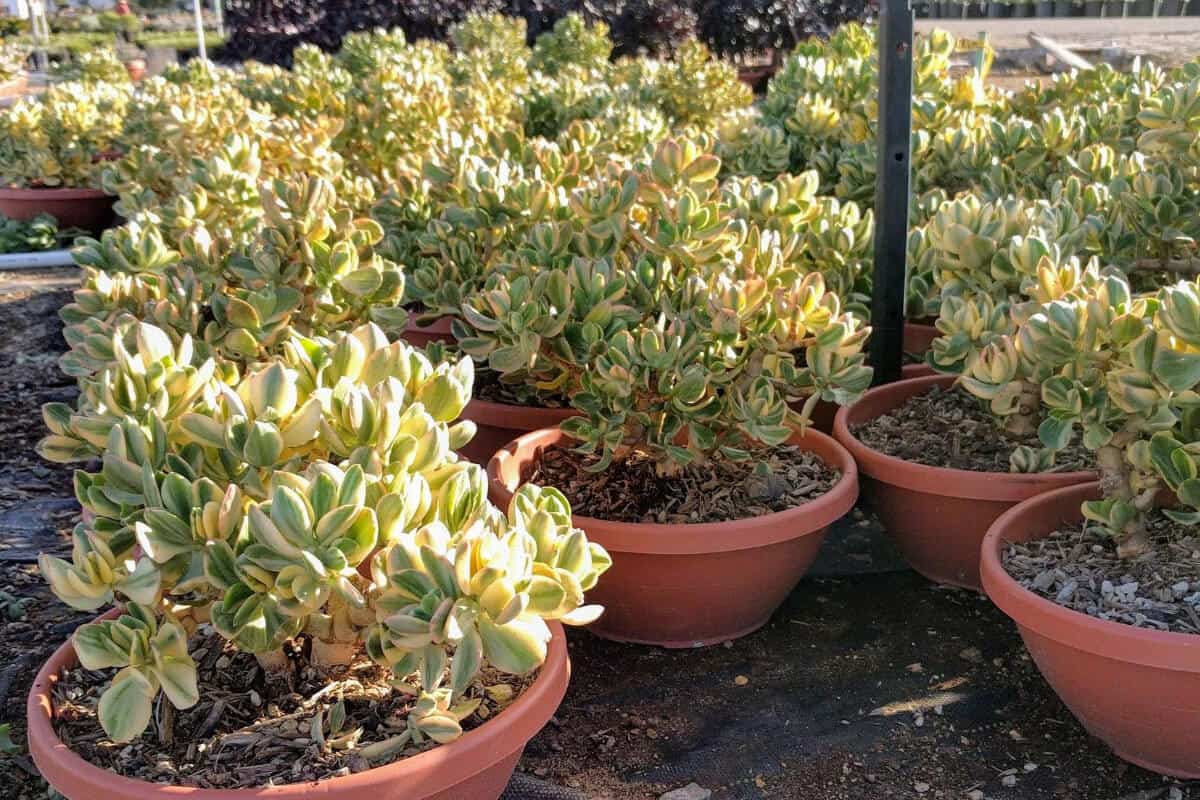Did you know that Crassula Ovata, or Jade Plants, are considered Lucky Plants by Feng Shui?
It is also sometimes referred to as Money Plant, Money Tree, or Friendship Plant.
Its green, oval leaves signify the energy of joy and friendship and also produce energy vibrations that attract wealth.
And, did you also know that the hardy and attractive jade plant can be cultivated both indoors and outdoors successfully?
When opting for container cultivation, it’s important to select the proper kind of soil mix and pots for jade plants.
With so many products available in the marketplace, choosing the correct type for your plant can be challenging.
- Read more about Jade Plant Characteristics
In this article, let’s look at the jade plant soil options that are best for a healthy and bushy jade plant as an indoor plant in your home garden!
Jade Plant Soil Mix Considerations

Jade plants thrive in soil beds that are aerated and well-draining. Your plant’s soil bed is what aids the prospering of your plant.
The soil for jade plants will support root systems and provide important nutrients for general health.
As a succulent, the Crassula ovata is sensitive to overwatering. The Jade plant stores water in its fleshy leaves.
Therefore, it is so important that it is well-draining soil, and excess water must have a way for proper drainage.
Overwatering, soggy, or wet soil will inevitably lead to root rot and is the biggest threat to the health and survival of your plant.
Grainy, gritty, and sandy soil textures are optimal because this avoids soil clumping and compaction.
A looser texture also allows for better aeration of the soil bed. This means that oxygen will arrive at the roots, and they will not be drowning in extra moisture.
If your jade plant sits in water, it will develop “wet feet”. Roots will be at risk for fungal diseases and root rot.
After a while, the root rot will affect the foliage and stems. You can notice this visibly as leaf joints develop dark circles and the foliage and stem turn mushy.
A common mistake of many is that they treat the jade plant as they would a cactus. Just remember that jade plants may require less water than popular houseplants but it still needs to be watered.
If you do not water it, the fleshy leaves where water is stored will shrivel and the plant will eventually die.
Any type of soil mixture must achieve a balance between moisture retention and sufficient drainage.
Jade plants are also characterized by their extensive root systems. A grainy soil texture allows a root system to develop easily and securely anchor the plant to the ground.
If the soil type is incorrect, your jade plant will be more susceptible to disease, pests, and health issues.
Jade Plant Soil Characteristics

Garden soil is often too heavy for a Jade plant and general-purpose potting soil will have too many moisture retention components.
The principal characteristics to look for in suitable soils for jade plant pot cultivation include:
- A gritty, grainy, sandy texture
- A fast or excellent drainage for plants
- A porous or rocky soil mix as water will pass through rapidly
If the soil mix appears to be fertile and rich in organic material, without sand or a grainy texture, it is not the proper soil choice.
There are many appropriate soil mixes available commercially, but it may be less expensive to blend your own soil mix. You will also be able to control the soil mix’s consistency better.
Jade Plant Soil pH Levels

Jade plants are not fussy, however, if you are beginning from scratch, transplanting, or repotting, keep pH levels in mind.
The Jade plant should have a little acidic soil. Test your soil’s pH with either a pH test kit or a pH soil probe.
The pH should measure approximately between 6 and 7.
Should your the result be alkaline soil, you can add a soil acidifier or granules.
Always avoid adding peat moss as this is a moisture retention ingredient.
Jade Plant Soil Ingredients
When preparing to blend your own jade plant soil mix, here are the ingredients and tools you will need:
- Horticultural sand is made from granite, quartz, or sandstone – the different textures and shapes of the particles in this mixture help in aerating the soil and providing good drainage. Also, soil compaction that may suffocate the plant is avoided.
- Container with lid for excess soil – It will help protect the soil from any moisture or contamination, prolonging its usage.
- Hand trowel – true blue-green thumbs like to get their hands dirty. But hand trowels allow you to do many things at once. This nifty tool allows you to dig deeper into the soil and mix things like peat moss, perlite, and compost more quicker.
- Measuring cup or scooper – measuring cups or scoops can be used to measure out the exact amounts of ingredients for the jade plant soil mix. This ensures that the proportions of each ingredient are accurate and that the soil has a balanced composition.
- Perlite, coco coir, pumice, or pine bark fines – sand and perlite/pumice are used in jade plant soil mix to improve drainage. The sand helps with aeration and the perlite/pumice keeps water from becoming stagnant, which can damage the roots of the jade plant.
- Potting soil – usually comes in dark color because of its high organic content. This soil is light and contains composted matter such as coconut noir, composted bark, and peat moss among others.
- Potting tray or bucket – is used to describe a container that is used to hold gardening materials such as soil for planting. It is usually shallow with holes to allow drainage.
How to Make Jade Plant Soil Mix
Step 1: Measure the Ingredients
The amount of soil that you will need should be proportioned to the size of the pot and the size of the plant that you are working with.
You can use this ratio for starters:
- 2 parts horticultural sand (you may use poultry grit as an alternative)
- 2 parts of potting soil
- 1 part perlite or pumice
Step 2: Combine the Ingredients
Pour all of the ingredients into your mixing container. Large buckets are ideal.
Step 3: Blend the Soil Mix
Mix the ingredients thoroughly using a hand trowel or similar. All ingredients must be completely blended.
Step 4: Use and Store
Use your soil for potting your jade plant. Excess soil can be stored in a container with an airtight lid for later use.
Signs of an Improper Jade Plant Soil Mix
A jade plant will grow naturally in rocky and loose soil. Fleshy foliage stockpiles necessary moisture. In dense soil, there will be excessive moisture retention.
There are various symptoms that will alert you that there may be a problem with the soil type. Watch out for these:
- Leaf Drop, meaning its leaves are dropping.
- Leaves are spongy.
- Shriveled leaves.
- Yellow leaves.
- Soil appears saturated.
- Roots, and possibly stems, are mushy and rotting. They may emit a telltale odor.
Most of these symptoms are due to overwatering or poor drainage, but can also be a result of incorrect temperature and nutrient deficiencies.
Jade Plant Pot Considerations

The type of pot and the material used in its construction can influence soil quality.
A jade plant will prosper in almost any type of pot as long as the container has sufficient drainage holes. This will allow the soil to drain correctly.
However, a terracotta or clay pot is still the best option for cultivating your jade plant.
While plastic pots are fine, the clay or terracotta pot will release or wick away excess moisture from the soil aiding in its evaporation.
Jade Plant Soil Mix Final Thoughts
A thing to remember about jade plants is that it does not normally appreciate too much water.
Using that information, make sure that you provide it with a well-draining formula that is gritty and grainy to avoid root rot.
The ideal pH level for this plant is somewhere between 6 and 7. Mixing your own soil blend allows you to control the consistency of the soil better as well as save money.
Clay or terracotta pots are recommended as they wick away excess moisture from the soil.
With proper Jade plant care and an adequate soil mix and pot, your Jade plant will thrive and will be a stunning succulent!
To know more about Jade plant soils, check out these amazing articles:
Jade Plant Soil FAQs
1. Do jade plants like small pots?
Yes, a jade plant can tolerate small pots. They prefer a pot that is approximately an inch larger than the main trunk’s diameter. But if the pot is too small, it can lead to root crowding, which can lead to the plant having stunted growth and even plant death.
2. Can I use cactus soil for a jade plant?
Yes, even though jade plants are succulent plants and not cacti.
The principal difference is that cactus mixes are very loose. They may not provide sufficient support for stems and trunks if your jade plant grows to be large or top-heavy.
To remedy this, add some potting soil or compost for extra support.
3. Do jade plants need special soil?
They do not need special soil but will do better with soil specifically mixed for succulents.
While they can be planted in potting mix, it’s not the best choice.
Standard potting mix will retain too much moisture, so overwatering is a risk.
4. Do jade plants like moist soil?
No, jade plants are succulents, so they retain moisture in their leaves.
They do not thrive in consistently moist soil. The top inches of the soil bed should dry out between waterings.
5. Do jade plants need a lot of light?
Yes, Jade plants need plenty of natural light per day to thrive. Place them in bright light indoors, but it shouldn’t be direct sunlight—any indirect light or sunlight will give the best results.

